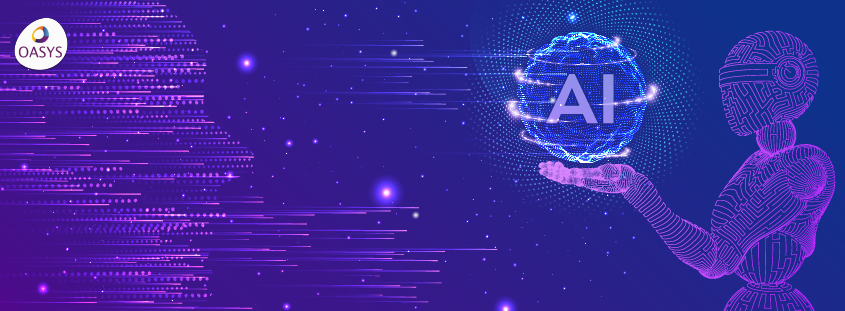Introduction
Artificial Intelligence (AI) has rapidly emerged as a transformative technology with the potential to revolutionize various industries, including PDS solutions, POS devices, ERP solutions, Prime Trip, digital door delivery, digital signage, erpc, printers, and scanners. Its continuous advancement is shaping the future in profound ways. As we look ahead, it becomes increasingly important to stay updated on the latest trends and applications that are propelling AI forward and the potential impact it will have on our lives. In this blog, we will delve into the exciting developments taking place in the field of AI and explore how they are likely to shape the world around us.
Machine Learning and Deep Learning
Machine Learning (ML) and Deep Learning (DL) are the core and key drivers of AI advancements. ML algorithms allow systems to learn from data and make predictions or decisions without explicit programming. DL, a subset of ML, mimics the human brain's neural networks to process complex patterns and solve intricate problems. These technologies are being applied across diverse domains, including finance, healthcare, and marketing. For instance, in finance, ML algorithms analyze vast amounts of financial data to detect patterns and make accurate predictions for investment strategies. DL models are used in healthcare for medical image analysis, enabling earlier and more accurate diagnoses.
Natural Language Processing (NLP)
Natural Language Processing (NLP) has made significant strides in recent years, enabling machines to understand and interpret human language. Voice assistants like Siri, Alexa, and Google Assistant have become household names, revolutionizing the way we interact with technology. In the future, NLP will continue to advance, leading to more sophisticated virtual assistants, chatbots, and language translation services. We can expect AI systems that understand context, emotions, and nuances of language, facilitating seamless communication between humans and machines.
Computer Vision
Computer Vision (CV) enables machines to interpret and understand visual information from images or videos. This technology finds applications in areas such as facial recognition, object detection, autonomous vehicles, and augmented reality. Facial recognition systems are being used for enhanced security and authentication purposes. Object detection algorithms are employed in autonomous vehicles to identify and respond to traffic signals, pedestrians, and obstacles. Computer vision also enables augmented reality applications, overlaying virtual objects onto the real world, enhancing user experiences in various domains, including gaming and e-commerce. We can anticipate a world where machines possess advanced visual perception capabilities, leading to safer transportation, enhanced security, and improved healthcare outcomes.
Internet of Things (IoT) and AI
Integrating AI with the Internet of Things (IoT) drives innovation in smart cities, industrial automation, and predictive maintenance. AI algorithms can analyze real-time data generated by IoT devices, enabling predictive analytics and optimizing decision-making. In smart cities, AI-powered systems can monitor and control various aspects such as traffic, energy consumption, waste management, and public safety. Industrial automation benefits from AI's ability to analyze sensor data, optimize production processes, and detect anomalies for predictive maintenance, leading to increased efficiency and reduced downtime.
Healthcare and AI
AI advancements offer significant benefits to the healthcare industry. AI-powered systems can analyze vast amounts of medical data, diagnose diseases, assist in surgical procedures, and predict outbreaks of diseases. In the future, we can expect AI to be integrated into wearable devices, allowing continuous monitoring of vital signs and early detection of health issues. AI will transform healthcare into a more personalized, efficient, and accessible ecosystem, improving patient outcomes and revolutionizing medical research. AI algorithms are being developed to analyze medical images such as X-rays and MRIs, assisting radiologists in identifying potential abnormalities. Additionally, AI-driven chatbots can provide preliminary diagnoses and offer healthcare recommendations based on patient symptoms.
Autonomous Systems
Significant progress has already been achieved by autonomous systems, including self-driving cars and drones. However, the future holds even more transformative advancements in this area. AI algorithms will enable autonomous vehicles to navigate complex traffic scenarios, make split-second decisions, and communicate with each other. Drones will be used for various applications, including delivery services, infrastructure inspections, and disaster response. The future will witness an AI-driven world where autonomous systems operate seamlessly, transforming transportation, logistics, and beyond.
AI and Cybersecurity
As technology advances, so does the threat landscape. AI will play a pivotal role in strengthening cybersecurity measures. AI algorithms can detect anomalies, identify potential threats, and respond quickly to cyber-attacks. In the future, AI systems will become even more sophisticated, capable of predicting and preventing cyber threats before they occur. This will provide robust protection for individuals, organizations, and critical infrastructure, safeguarding our digital world.
Conclusion
The future of artificial intelligence holds immense promise, and the latest trends and applications discussed in this blog showcase its potential impact on various industries. Machine learning, deep learning, natural language processing, computer vision, IoT integration, and healthcare are just a few areas where AI is making significant strides. As AI continues to evolve, it is crucial to embrace and leverage its capabilities responsibly and ethically, ensuring a better future for humanity. The days ahead are filled with promise, as AI stands ready to revolutionize our lifestyles, occupations, and interactions with technology.


